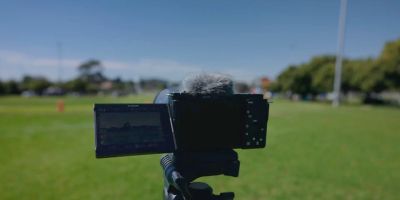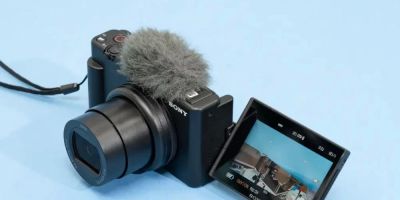How to Use Reflectors in Studio Portrait Photography
When it comes to studio portrait photography, lighting is one of the most crucial aspects that can make or break your shot. While studio lights and softboxes are often the go-to tools for photographers, the humble reflector is an essential, yet sometimes overlooked, item in the photographer's toolkit. In this article, I’ll share how reflectors can enhance your studio portraits, the different types of reflectors, and how to use them to achieve professional-looking photos.
1. What Are Reflectors in Photography?
Reflectors in photography are devices used to bounce light onto a subject, filling in shadows and highlighting specific areas of the face or body. They come in various shapes, sizes, and materials, but the core function remains the same: to control and manipulate light for a desired effect. In studio portrait photography, reflectors play a significant role in controlling light in ways that help achieve flattering and natural-looking portraits.
2. Why Are Reflectors Important in Studio Portrait Photography?
Reflectors are incredibly useful when you're working with artificial light in the studio. While your primary light source (typically a softbox or umbrella) will cast light in a specific direction, reflectors help you fill in the shadows and brighten darker areas of the subject's face or background. This creates a more balanced, natural look, which is essential for flattering portrait photography. They can also add contrast or reduce harsh shadows when necessary, offering greater flexibility in how you control light.
3. Different Types of Reflectors
There are several types of reflectors, and each serves a different purpose depending on the look you’re trying to achieve. The most common types include:
- White Reflectors: These are ideal for soft, natural-looking light. White reflectors bounce light back gently without introducing color casts, making them versatile for a variety of portrait styles.
- Silver Reflectors: These reflect more intense light, creating a more dramatic and vibrant look. Silver reflectors are perfect for high-contrast portraits, especially if you're looking for sharp highlights and deep shadows.
- Gold Reflectors: Gold reflectors add a warm, golden tone to the skin, which is great for portraiture with a glowing, sun-kissed effect. They’re often used for beauty shots or creating a warm, rich atmosphere.
- Black Reflectors: While black reflectors don’t reflect light, they can be used to absorb it, deepening shadows and creating more contrast in your images. These are useful for high-contrast shots where you need to control light distribution more precisely.
4. How to Use Reflectors in Your Studio Portrait Setup
Now that we know the different types of reflectors, let’s discuss how to use them effectively in your studio portrait setup. There are a few essential tips that can help you get the most out of your reflectors:
4.1 Positioning Your Reflector
Positioning is key when using a reflector. For a standard portrait, place the reflector below your subject’s face to bounce light upwards. This technique helps illuminate the shadows under the chin and around the eyes, ensuring that your subject's features are evenly lit. The angle of your reflector will depend on the lighting setup and the look you’re trying to achieve. If you’re going for a more dramatic portrait, consider placing the reflector at an angle to create more contrast in the shadows.
4.2 Balancing Light with Reflectors
In portrait photography, the goal is often to balance the key light (your primary light source) with fill light (light bounced from the reflector). Start by placing your main light at an angle to the subject, then use the reflector to fill in the opposite side. This can help reduce harsh shadows without eliminating them entirely, maintaining depth and dimension in the portrait. Adjust the reflector's distance and angle to control the amount of fill light in the image.
4.3 Using Multiple Reflectors for Complex Lighting
In more advanced portrait setups, you might find it useful to employ more than one reflector. For example, you can place one reflector to fill shadows from the front and another one at the back to add a bit of rim lighting or separation between the subject and the background. This can give your photos a more three-dimensional look and help emphasize the subject’s features, especially in headshots and beauty photography.
5. Reflectors in Different Studio Settings
The great thing about reflectors is their versatility. Whether you’re working with a single light setup or a more complex arrangement of multiple lights, reflectors can always help improve your portrait shots. If you’re working with a simple setup, try bouncing your main light off a wall or ceiling, then using a reflector to add some fill light. Alternatively, if you’re working with multiple light sources, use reflectors to soften and control the light, preventing harsh shadows and ensuring the light is evenly distributed.
6. Practical Tips and Real-Life Examples
In my experience, one of the most effective ways to use reflectors in a studio is to experiment with different materials and positions. I once worked on a shoot where we were using silver and gold reflectors for a beauty campaign. By switching between these two reflectors, we could add both vibrant highlights and warm tones to the skin, which created a stunning contrast that enhanced the subject's natural beauty.
Another time, I worked with a team on a high-fashion shoot, and we needed to create dramatic shadows to give the subject a more sculpted appearance. By using black reflectors to absorb light from certain areas, we were able to produce the sharp contrast needed to achieve that high-fashion look. These examples show just how much creative flexibility you can have by simply using reflectors in different ways.
7. Conclusion
Reflectors are a simple yet powerful tool for any portrait photographer. Whether you’re a beginner or an experienced professional, knowing how to use reflectors effectively can take your studio portrait photography to the next level. By experimenting with different types of reflectors and adjusting their positions, you can achieve a wide range of lighting effects that enhance the mood, highlight features, and create stunning portraits. So, if you haven’t already, try adding a reflector to your next shoot—you might be surprised by the difference it makes!





